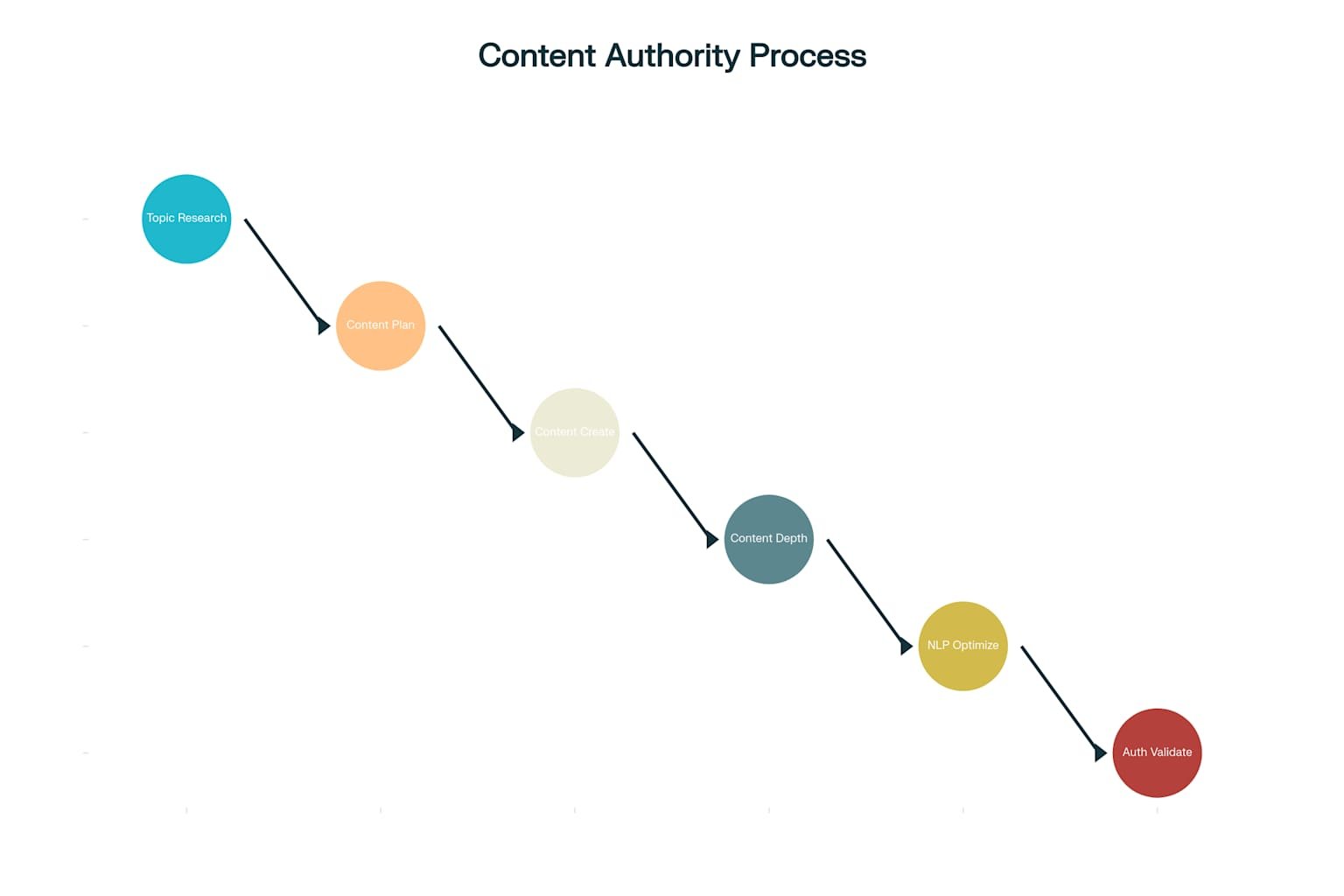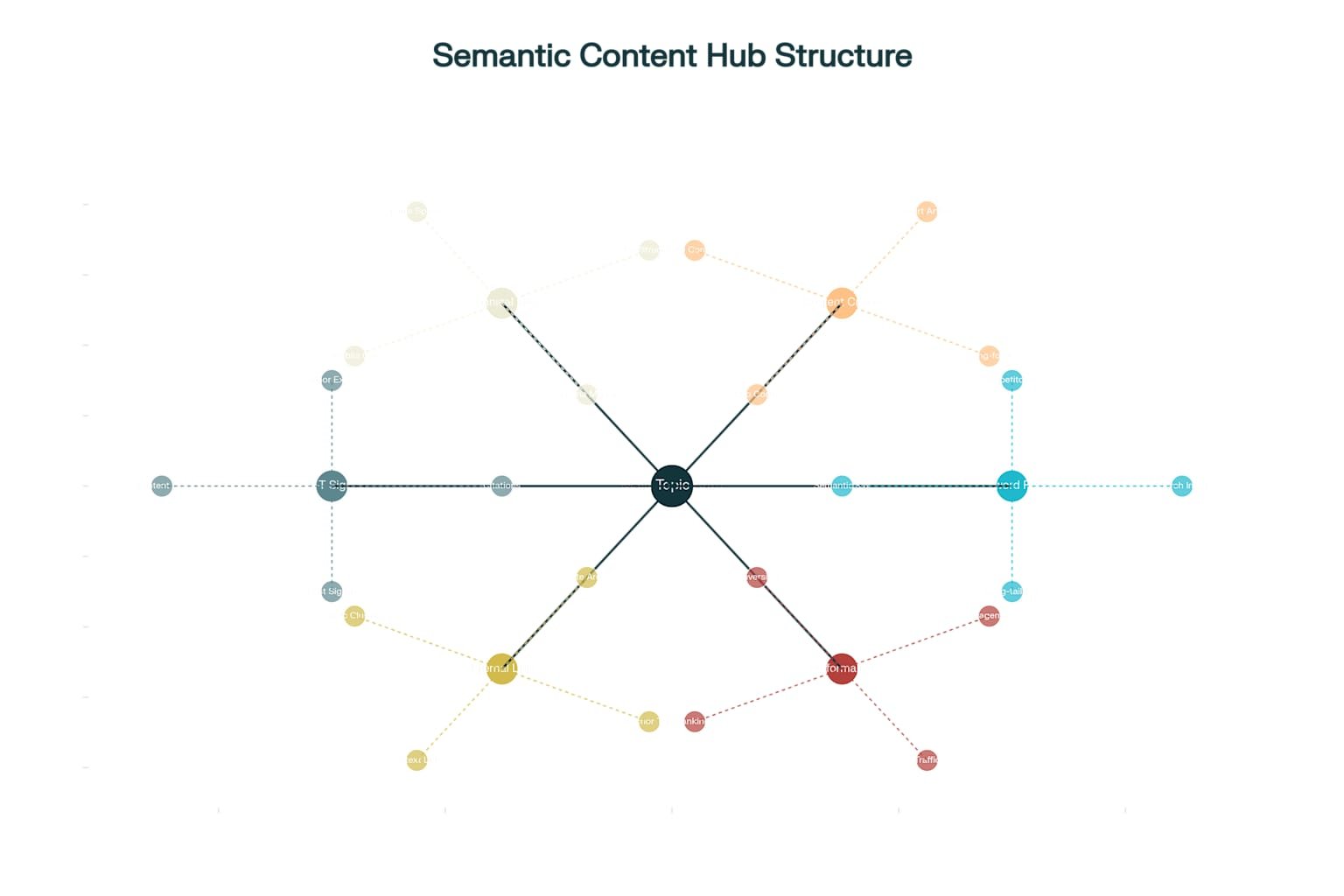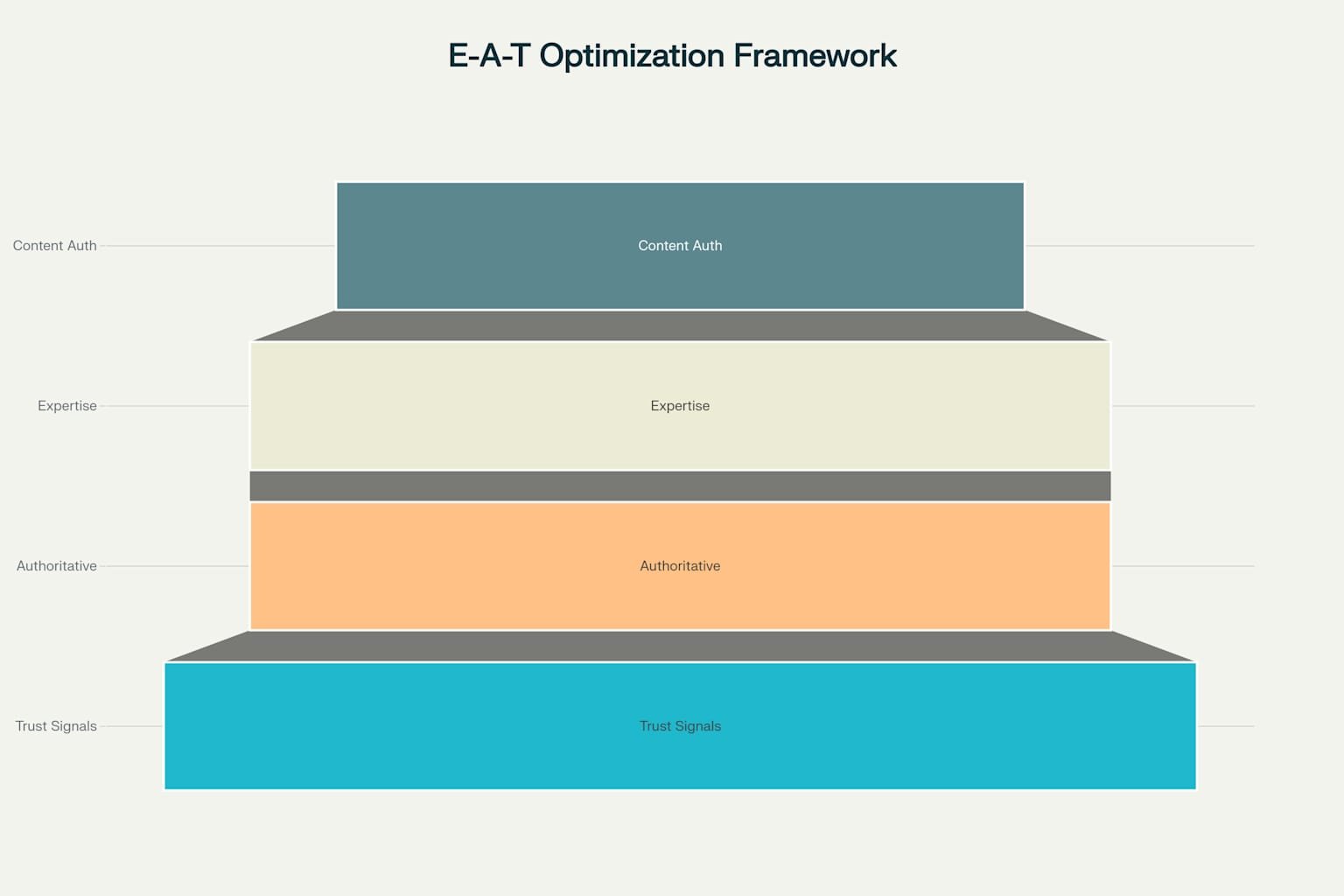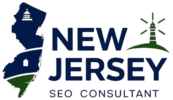In today’s competitive digital landscape, establishing content authority has become the cornerstone of successful SEO strategies. As search engines continue to evolve and prioritize expertise, authoritativeness, and trustworthiness, businesses must adopt sophisticated approaches to content creation that go beyond traditional keyword-focused methodologies. This comprehensive guide explores how to build content authority through strategic topic modeling, creating robust content ecosystems that demonstrate genuine expertise and drive sustainable organic growth.
Content authority represents more than just ranking well for specific keywords—it encompasses becoming the definitive resource within your industry or niche. When you achieve true content authority, your website becomes the go-to destination that both users and search engines trust for comprehensive, accurate, and valuable information. This transformation requires a systematic approach that combines deep subject matter expertise with advanced SEO techniques.

Content Authority Building Process: A comprehensive 6-step framework for establishing topical expertise
The process of building content authority begins with understanding that modern search engines evaluate content holistically rather than focusing solely on individual pages or keywords. This shift toward topical authority means that businesses must create interconnected content networks that comprehensively cover their areas of expertise. Whether you’re working with an NJ SEO Expert or developing an in-house strategy, the principles remain consistent: depth, breadth, and interconnectedness are essential.
Table of Contents
ToggleBuilding Topical Authority Through Content Depth and Breadth
Topical authority emerges when your content demonstrates both comprehensive coverage of a subject area and deep expertise within specific subtopics. This dual approach requires careful planning and execution, as you must balance the breadth necessary to cover an entire topic comprehensively with the depth needed to establish expertise.
Content depth involves creating thorough, detailed resources that explore every facet of a particular subtopic. Instead of surface-level blog posts that briefly touch on concepts, authoritative content dives deep into the nuances, challenges, and solutions within each area. For example, if your expertise lies in SEO, creating in-depth guides about technical SEO audits, local SEO strategies, or content optimization techniques demonstrates the kind of specialized knowledge that search engines reward.
Content breadth, meanwhile, ensures that you address the full spectrum of topics within your domain. This means identifying all the related subtopics, questions, and concerns that your target audience might have and creating content that addresses each area comprehensively. The goal is to become the definitive resource where users can find answers to any question within your field of expertise.
Successful implementation of this strategy requires a structured approach to content planning. Begin by mapping out your primary topic areas and identifying all the subtopics, related concepts, and supporting topics that fall within your expertise. This creates a content framework that ensures comprehensive coverage while preventing gaps that competitors might exploit.
The relationship between depth and breadth also extends to how you structure your content hierarchy. Pillar pages should provide comprehensive overviews of broad topics, while cluster content explores specific aspects in detail. This approach creates a natural linking structure that reinforces your topical authority and helps search engines understand the relationships between different pieces of content.
Creating Semantic Content Hubs for SEO Expertise
Semantic content hubs represent the evolution of traditional content clusters, leveraging advanced understanding of how search engines interpret content relationships and user intent. These hubs organize content around semantic relationships rather than simple keyword groupings, creating more natural and effective content ecosystems.

Semantic Content Hub Architecture: Hub-and-spoke model for comprehensive topic authority
A semantic content hub begins with a central pillar piece that serves as the authoritative resource for a broad topic. This pillar connects to multiple related content pieces through semantic relationships rather than just keyword similarity. For instance, a pillar page about “SEO Strategy” might connect to content about user experience, technical optimization, content marketing, and analytics—all related through semantic connections rather than exact keyword matches.
The power of semantic content hubs lies in their ability to capture the full context of user searches and content relationships. Modern search engines understand that users searching for “improve website rankings” might also be interested in content about site speed, mobile optimization, or content quality. By creating semantic connections between these topics, you provide comprehensive value while demonstrating topical expertise.
Creating effective semantic hubs requires understanding entity relationships and user journey mapping. Entities are the people, places, things, and concepts within your content, while user journeys represent the paths users take as they seek information or solutions. By mapping these relationships, you can create content connections that feel natural and provide genuine value.
The technical implementation of semantic hubs involves strategic internal linking, consistent use of related terminology, and careful attention to content architecture. Each piece of content within the hub should reinforce the overall topic while providing unique value. This approach helps search engines understand your expertise while creating multiple pathways for users to discover and engage with your content.
Working with an SEO expert in New Jersey can help ensure that your semantic content hubs are properly structured and optimized for both search engines and users. The complexity of semantic relationships often requires specialized knowledge to implement effectively.
Question-Answer Optimization Using NLP Analysis
Natural Language Processing (NLP) has revolutionized how search engines understand and respond to user queries, making question-answer optimization a critical component of content authority building. This approach focuses on understanding the specific questions users ask and creating content that provides comprehensive, accurate answers.
NLP analysis reveals the nuances of how users formulate questions and what they’re truly seeking when they search. Traditional keyword research might identify “SEO tips” as a target phrase, but NLP analysis reveals the underlying questions: “What are the most effective SEO strategies?” “How do I improve my website’s search rankings?” “What SEO mistakes should I avoid?” Each of these questions represents a different user intent and requires tailored content approaches.
The question-answer optimization process begins with comprehensive question research. This involves analyzing search queries, examining “People Also Ask” sections, reviewing forum discussions, and identifying the specific questions your target audience asks. Tools that leverage NLP can help identify question patterns, semantic variations, and related queries that might not be immediately obvious.
Content structure plays a crucial role in question-answer optimization. Rather than burying answers within long paragraphs, effective content explicitly addresses questions with clear, concise answers followed by detailed explanations. This approach satisfies both users seeking quick answers and those wanting comprehensive information.
The implementation of structured data markup enhances question-answer optimization by helping search engines identify and potentially feature your answers in rich snippets, featured snippets, or voice search results. FAQ schema, Q&A schema, and how-to schema all provide opportunities to increase visibility while demonstrating content authority.
Voice search optimization represents another dimension of question-answer optimization. As users increasingly rely on voice assistants for information, content must address the conversational nature of voice queries. This means incorporating natural language patterns and providing answers that work well in spoken formats.
Content Gap Analysis Using Semantic Similarity
Content gap analysis has evolved beyond simple keyword gap identification to encompass semantic similarity analysis. This advanced approach identifies opportunities by understanding the conceptual relationships between topics and the semantic connections that users and search engines recognize.

Content Gap Analysis: Opportunity scores for different SEO topic areas
Traditional gap analysis might identify missing keywords in your content strategy, but semantic similarity analysis reveals missing conceptual areas that could strengthen your topical authority. For example, if you have strong content about “on-page SEO” and “technical SEO” but lack content connecting these concepts to “user experience,” semantic analysis would identify this as a significant gap.
The process begins with mapping your existing content using semantic analysis tools that understand topic relationships rather than just keyword frequency. This creates a visual representation of your content landscape, revealing clusters of strong coverage and areas where connections are weak or missing.
Competitive semantic analysis provides additional insights by examining how competitors structure their content relationships. This analysis reveals not just what topics they cover, but how they connect different concepts and what semantic pathways they create for users and search engines.
User intent mapping plays a crucial role in semantic gap analysis. Different users might search for the same information using varied terminology or approaching the topic from different angles. Semantic analysis helps identify these varied approaches and ensures your content addresses all potential user pathways.
The implementation of semantic gap analysis requires understanding search engine knowledge graphs and entity relationships. Search engines maintain vast databases of connected concepts, and your content strategy should align with these understood relationships while identifying opportunities to establish new connections.
A SEO Consultant in New Jersey can provide valuable expertise in conducting thorough semantic gap analysis, as this process requires both technical knowledge and strategic insight to identify the most valuable opportunities for content development.
Expert Content Validation and E-A-T Optimization
Expertise, Authoritativeness, and Trustworthiness (E-A-T) have become fundamental factors in content authority, particularly for topics that could impact users’ health, financial stability, or life decisions. Building and demonstrating E-A-T requires systematic approaches to content validation and authority establishment.

E-A-T Optimization Pyramid: Building content authority through Trust, Authoritativeness, and Expertise
Expert content validation begins with ensuring that your content is factually accurate, up-to-date, and reflects current best practices. This involves regular content audits, fact-checking processes, and updates based on industry changes or new information. The validation process should include both internal reviews and external expert verification when possible.
Author expertise demonstration requires clear attribution and credential establishment. Content should clearly identify authors and their qualifications, providing transparency about who created the information and why they’re qualified to discuss the topic. This might include professional certifications, years of experience, notable achievements, or recognition within the industry.
Authoritativeness extends beyond individual expertise to encompass your organization’s reputation and recognition within the industry. This includes mentions in reputable publications, citations from other authoritative sources, awards or certifications, and participation in industry events or organizations. Building authoritativeness requires consistent effort over time and often involves public relations and thought leadership activities.
Trustworthiness encompasses the reliability and transparency of your content and organization. This includes clear contact information, transparent business practices, customer reviews and testimonials, security measures, and consistent, honest communication. Technical factors like SSL certificates and professional website design also contribute to trustworthiness signals.
The implementation of E-A-T optimization requires attention to both content quality and technical implementation. Schema markup can help search engines identify author information, organization details, and content relationships. Regular monitoring and improvement of E-A-T signals helps maintain and enhance content authority over time.
Long-Form Content Structuring for Topic Comprehensiveness
Long-form content serves as the foundation of content authority, providing the space and depth necessary to comprehensively address complex topics. However, length alone doesn’t guarantee authority—the structure and organization of long-form content determine its effectiveness in demonstrating expertise and providing user value.

Content Type Effectiveness Analysis: Comparing SEO performance metrics across different content formats
Effective long-form content begins with comprehensive topic research that identifies all aspects of a subject that users might want to understand. This research phase ensures that your content addresses the topic thoroughly rather than simply reaching an arbitrary word count. The goal is to create resources that leave users feeling confident in their understanding and able to take meaningful action.
Content structure should follow logical progression that mirrors how users naturally think about and approach the topic. This might follow a problem-to-solution structure, a chronological approach, or a complexity-based progression from basic concepts to advanced applications. Clear headings and subheadings help users navigate the content while providing search engines with strong topical signals.
The integration of multiple content types within long-form pieces enhances both user experience and authority demonstration. This might include embedded videos, interactive elements, downloadable resources, case studies, or expert quotes. Each element should contribute to the overall narrative while providing unique value.
Internal linking within long-form content creates pathways to related information while reinforcing topical relationships. Strategic linking helps users discover additional relevant content while demonstrating the breadth of your expertise. The key is ensuring that links feel natural and provide genuine value rather than appearing forced or manipulative.
User engagement optimization ensures that long-form content maintains reader interest throughout. This involves varying content formats, using visual elements to break up text, providing clear takeaways and action items, and structuring information to support both quick scanning and deep reading.
Working with a New Jersey SEO agency can help ensure that long-form content is properly optimized for both search engines and users, balancing comprehensiveness with accessibility and engagement.
Advanced Implementation Strategies
Successfully implementing content authority building requires coordination between multiple disciplines and ongoing refinement based on performance data. The most effective strategies combine content expertise with technical SEO knowledge, user experience optimization, and data-driven decision making.
Content calendar development should align with your authority-building goals, ensuring consistent publication of high-quality content that reinforces your expertise. This calendar should balance pillar content creation with supporting content development, seasonal considerations, and industry trends or developments.
Performance monitoring extends beyond traditional SEO metrics to include authority indicators like brand mentions, expert citations, featured snippet appearances, and topical ranking improvements. These metrics provide insights into how successfully your content is establishing authority within your field.
The integration of user feedback and engagement data helps refine your content authority strategy over time. Comments, questions, social shares, and user behavior data all provide insights into how well your content is meeting user needs and where improvements might be beneficial.
Collaboration with industry experts and thought leaders can enhance your content authority while providing networking opportunities. Guest contributions, expert interviews, collaborative research, and industry partnerships all contribute to establishing your organization as a recognized authority.
Technical optimization ensures that your authority-building efforts translate into search engine visibility and user accessibility. This includes site speed optimization, mobile responsiveness, structured data implementation, and ongoing technical maintenance that supports your content strategy.
The Future of Content Authority
Content authority building continues to evolve as search engines become more sophisticated and user expectations increase. Understanding emerging trends and preparing for future developments ensures that your authority-building efforts remain effective over time.
Artificial intelligence and machine learning are increasingly important in content evaluation, making it essential to focus on genuine expertise and value rather than trying to manipulate ranking factors. The most sustainable approaches to content authority focus on creating genuinely helpful resources that serve user needs.
Voice search and conversational interfaces are changing how users discover and interact with content, requiring optimization for natural language patterns and question-based queries. This shift reinforces the importance of comprehensive topic coverage and clear, direct answers to user questions.
Visual and multimedia content continues to grow in importance, requiring integration of various content formats within comprehensive topic coverage strategies. The most authoritative resources often combine text, images, videos, and interactive elements to provide complete topic coverage.
Whether you’re working with New Jersey SEO services or developing an internal strategy, staying current with these developments ensures that your content authority building efforts remain effective and future-focused.
Conclusion
Building content authority through topic modeling represents a sophisticated approach to SEO that goes far beyond traditional keyword optimization. By creating comprehensive content ecosystems that demonstrate genuine expertise, businesses can establish lasting competitive advantages and sustainable organic growth.
The key to success lies in understanding that content authority emerges from the intersection of comprehensive topic coverage, genuine expertise, and strategic implementation. This requires coordination between content creation, technical optimization, user experience design, and ongoing performance monitoring.
As search engines continue to evolve and user expectations increase, the businesses that succeed will be those that commit to creating genuinely valuable resources that serve user needs while demonstrating clear expertise. Whether you’re working with a SEO company in New Jersey or building internal capabilities, the principles outlined in this guide provide a roadmap for establishing content authority that drives meaningful business results.
The investment in content authority building pays dividends over time, creating sustainable competitive advantages and establishing your organization as a trusted resource within your industry. By following these comprehensive strategies and maintaining a commitment to quality and expertise, you can build content ecosystems that demonstrate authority and drive lasting organic success.

